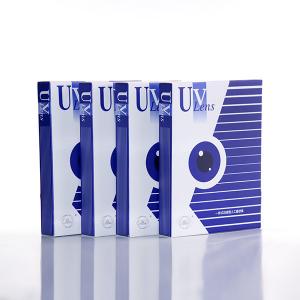

Add to Cart
One Piece PMMA Intraocular Lens Overall Diameter 13.5mm PC156C65
One Piece PMMA Intraocular Lens Overall Diameter 13.5mm Design features:
1- The IOL produced by our company is made of PMMA, allowing the good flexibility of the loops,which can be bent to the optical part of the IOL, making the IOL implanted easily inside the capsular bag.
2- The 10°angle of the haptic allows the lens to have a complete contact with the posterior side of the lens capsule.
3- The haptic are designed to maintain stability of lens implant in the eye, which keeps the IOL centered in the optical field.
4- The IOL produced by our company can filter the ultraviolet rays effectively, and the rate of the visible light is greater than 90%.
The development and use of intraocular lenses has been a major ophthalmic success story. PMMA Intraocular Lens are commonly used in the world. PMMA as the material used to make IOLs had many advantages.
Product Parameters:
| Model | PC156C65 |
| Optic Material | PMMA |
| Overall Length (mm) | 13.5 |
| Optic diameter (mm) | 6.5 |
| Positioning Hole | 0 |
| Haptic material | PMMA |
| Haptic Type | Modified C |
| Haptic anglulation | 10° |
| A Constant | 118.2 |
Advantage of One Piece PMMA Intraocular Lens Diameter 13.5mm PC156C65:
It all started with an eye injury
PMMA’s entry into medicine began in World War II with the unfortunate fate of a pilot in the British Royal Air Force named Gordon Cleaver. In the summer of 1940, when scrambling to board his plane for a mission, Cleaver forgot his goggles.
According to reports, Cleaver’s plane ran into machine-gun fire over the city of Winchester in the South of England. His aircraft burst into flames, its canopy shattered, and shards of the PMMA acrylic cover lodged themselves deep in Cleaver’s eyes. The young pilot managed to evacuate the plane and parachuted — burned and bleeding — to the ground.
The doctors couldn’t do anything about his right eye, as it was too badly damaged to save. But a London ophthalmologist named Harold Ridley performed 18 surgeries on Cleaver’s left eye and managed to save his sight.
While repairing Cleaver’s eye, Ridley noticed something odd: The splinters of the acrylic from the plane’s canopy that he pulled from the pilot’s eye had not caused any inflammation. His body just seemed to accept them and did not try to reject this foreign material, nor did the acrylic affect his sight.
This gave Ridley an idea. The doctor had been considering what could be used to craft artificial lenses for the eye: PMMA might do the trick.
